Last updated on February 13, 2024
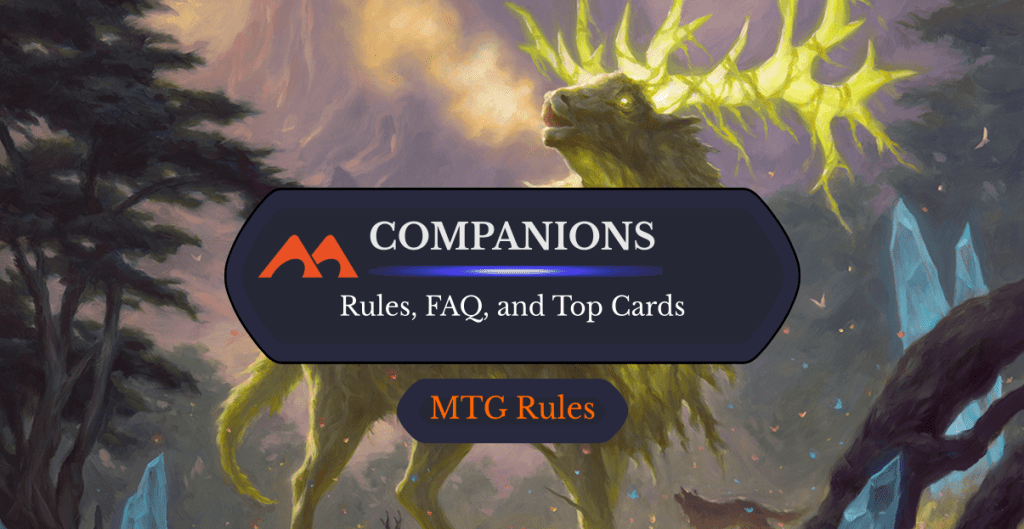
Jegantha, the Wellspring | Illustration by Chris Rahn
Companion is a very controversial mechanic. Some people love the challenges and the extra power companions can bring, while other players get tired of battling Lurrus of the Dream-Den or Yorion, Sky Nomad decks again and again. Companions are very interesting in formats like Standard and Limited, because in these formats it’s risky and suboptimal to play companion decks, and the deckbuilding restrictions are real.
However, when we go to formats like Modern and Legacy with a much wider card pool, it’s very easy to play companion decks efficiently, so they’re the best thing to do in those formats. Today we’re going over all there is to know about companion rules, the power level controversy, and why WotC nerfed a whole mechanic.
That doesn’t happen every day, so stay with me and we’ll go through the whole companion debate.
How Does Companion Work?
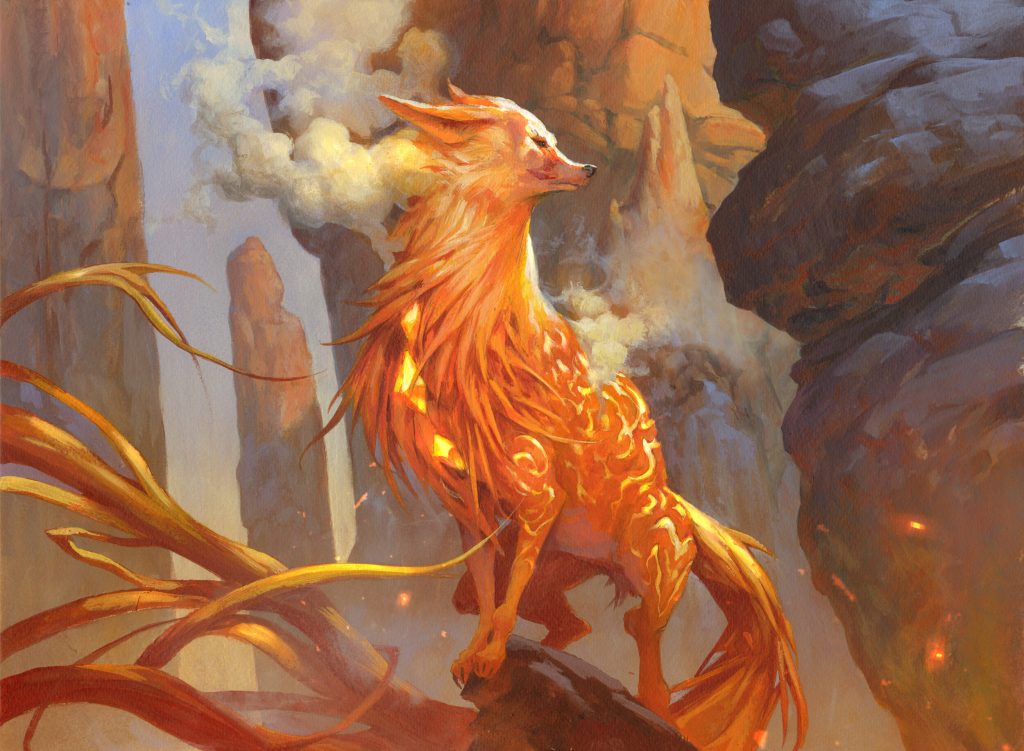
Zirda, the Dawnwaker | Illustration by Jesper Ejsing
Companion is an ability found on ten cards from Ikoria: Lair of Behemoths. The companion ability asks you to build your deck with certain restrictions. Each companion asks for something different, and if you follow the restrictions, once per game you can put the companion card in your hand. It’s similar to Commander and the commander zone, except that companion only works once per game.
The companion card goes in your sideboard, and if you build your deck following the companion’s restrictions, you’ll be able to pay to put the companion straight into your hand from your sideboard. The deck building restrictions are hard, but the power of the companion is worth it most of the time.
For example, Yorion, Sky Nomad can blink every nonland permanent you control when it ETBs, which is awesome, but you’ll need to play 20 more cards in your deck. Obosh, the Preypiercer doubles all sources of damage you control from permanents with odd mana values, but you can only play nonland cards with an odd mana value.
When Can You Activate a Companion Ability?
You can activate companion only at sorcery speed, which is during your main phases only. Also, you must have priority and the stack must be empty. You must pay , and after that, your companion goes straight to your hand. This ability can’t be responded to because it doesn’t use the stack, and you can only do this once per game.
Are Companions in Your Sideboard?
Yes. When you play using the companion rule, one of your 15 sideboard cards must be your companion. If you’re playing a best-of-one on MTG Arena, the companion must be one of your seven sideboard cards.
What Was the Companion Rules Change?
When companions were first released, your companion started the game in your sideboard, and you could cast it directly from there (as though it were in your hand). After companions proved to be dominant in tournament situations across various formats, WotC decided to nerf the companion rule, and now you need to pay to put the companion from your sideboard into your hand before being able to cast it.
Why Did They Change Companion’s Cost?
Although companions posed a minor power level problem in Standard, they ended up being very strong in Eternal formats like Modern, Legacy, and Vintage. Lurrus of the Dream-Den takes the cake, having been banned in Vintage, Legacy, Modern, and Pioneer. Being able to start with an extra card is very powerful, and even if you needed to build your deck with restrictions, it was worth the extra card.
Also, companions being so powerful reduces deck diversity. If everyone is playing Lurrus in a given format, cards with a mana value of 3 or greater become unplayable. Most decks were comprised of the best permanents that cost 2 mana or less.
Can You Include a Companion in Your Deck Without Meeting Its Requirement?
You can play as many creatures with the companion mechanic as you want in your maindeck without meeting any deck building constraints. You’ll just play them as regular cards, without the use of the companion mechanic.
Can You Change Companions Between Games in a Match?
You can. However, you’ll probably need to change some cards between the main deck and sideboard because different companions have different deck building restrictions. There were some decks in Standard that swapped Lurrus of the Dream-Den and Zirda, the Dawnwaker between games because most of the cards these decks played happened to be cheap permanents with activated abilities. If all your nonland cards are different, you can change between Lutri, the Spellchaser or another companion that fits the restriction.
When Do You Reveal a Companion in Tournaments?
If you have a companion in your sideboard and you want to make use of the companion mechanic, you’ll have to reveal the companion from your sideboard before the game begins. This is needed because you can have a creature with companion in your sideboard but not use the companion mechanic altogether. Also, you can only reveal one companion at the start of each game, so you’ll have to choose the intended companion for that game.
Can You Have Multiple Companions?
The first answer is no. You can only have one companion at a given time, provided that you meet all the deck building restrictions. However, you can put multiple cards that have the companion mechanic in your deck. They’ll be treated as normal cards, and you can ignore the companion mechanic or the deck building restrictions.
What Happens When a Companion Dies?
The companion is put into the graveyard when it dies, like any regular card. You can even get it back from your graveyard with cards like Gravedigger or Raise Dead, known as gravedigger effects.
Can I Include Hybrid Mana Symbols to Meet a Companion’s Requirement?
You can’t. For the purposes of Jegantha, the Wellspring, you can’t have a card with two of the same hybrid mana symbol. You can’t have a mana cost of even though the card can be paid with different color of mana. You can have a card like Crystallization in your Jegantha deck, or Evelyn, the Covetous since the , , and mana symbols are all different.
How to Use Companions on MTGO
To use a companion like Yorion, Sky Nomad on MTGO, you must first put it in your sideboard. Here’s the information about Yorion as a companion, and in red the text shows “Companion’s deck requirements not met”.

Fill the deck with cards next. Here’s a Pioneer deck on MTGO with Yorion, the Sky Nomad as its companion. The deck must have 20 more cards than a usual Pioneer deck, so 80 instead of 60. Yorion is in the sideboard as one of the 15 possible sideboard slots.
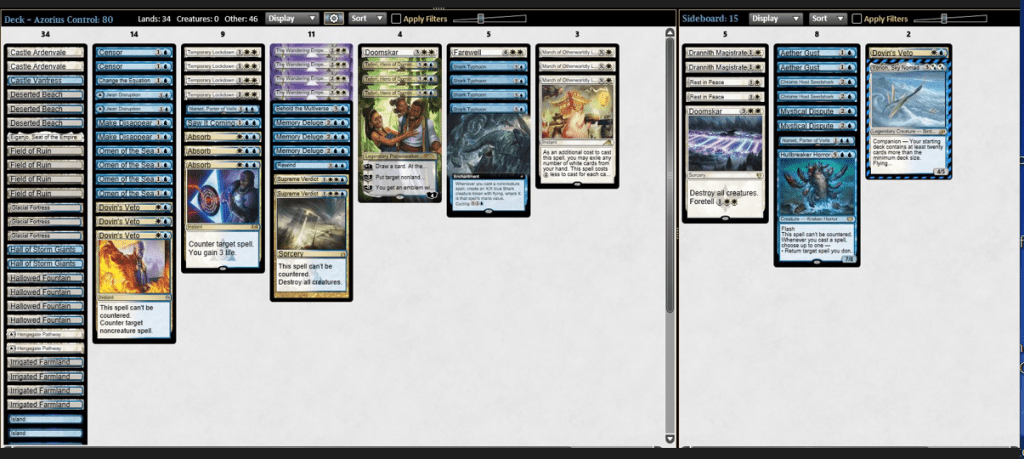
Here’s what happens when you start a match with this deck. MTGO asks you to choose up to one companion, and in this case the only possible companion is highlighted.

Finally, the match has just started and this is the opening hand. MTGO tells you that Yorion entered the Companion Area Zone. From there, you can put it into your hand by paying .
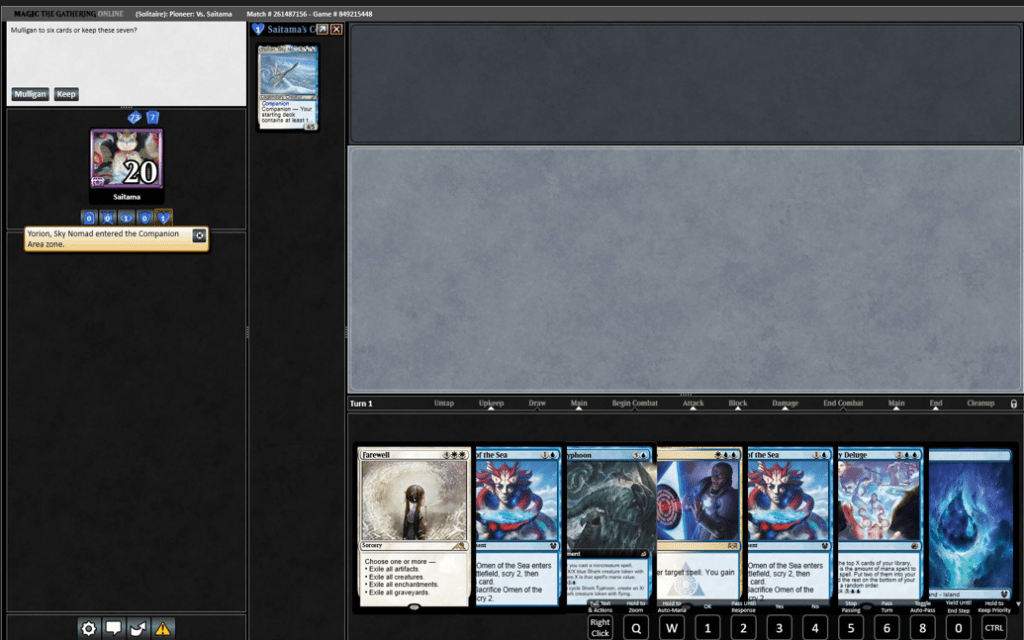
How To Use Companions on MTGA
As you can see, the first thing you’ll do on MTGA is to add the companion to an empty deck, since it’s easier to build a deck with a companion this way. Arena uses this “yellow animal paw” symbol for companions.
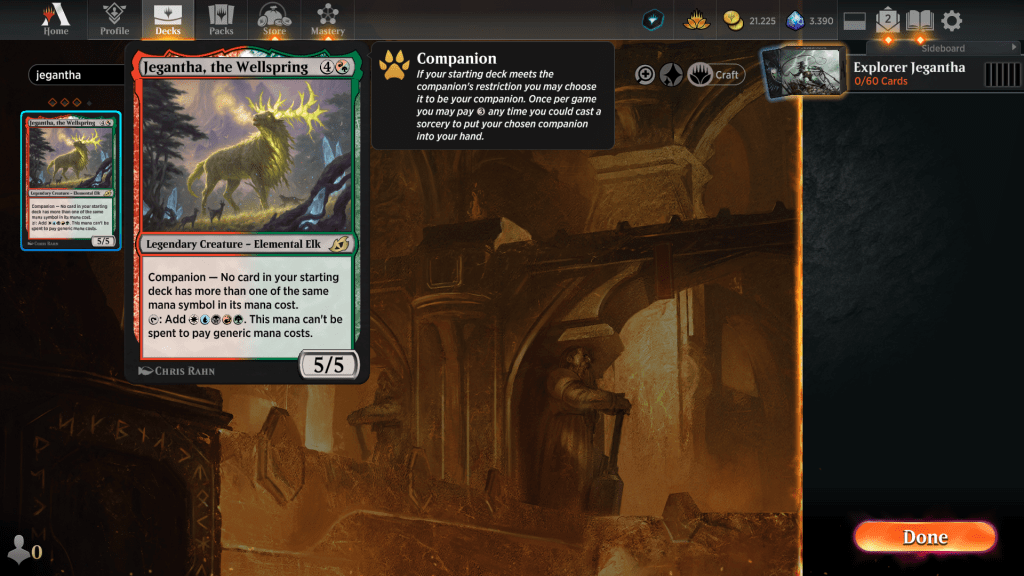
Once you select Jegantha, the Wellspring, Arena asks if you want Jegantha to be your companion, and it reminds you of the deck building requirements. Click on yes. Another nice feature is that when a companion card is selected, MTG Arena turns a companion filter on, so it only lets you search for cards that meet the deck building requirement for the companion. This filter can be turned off.
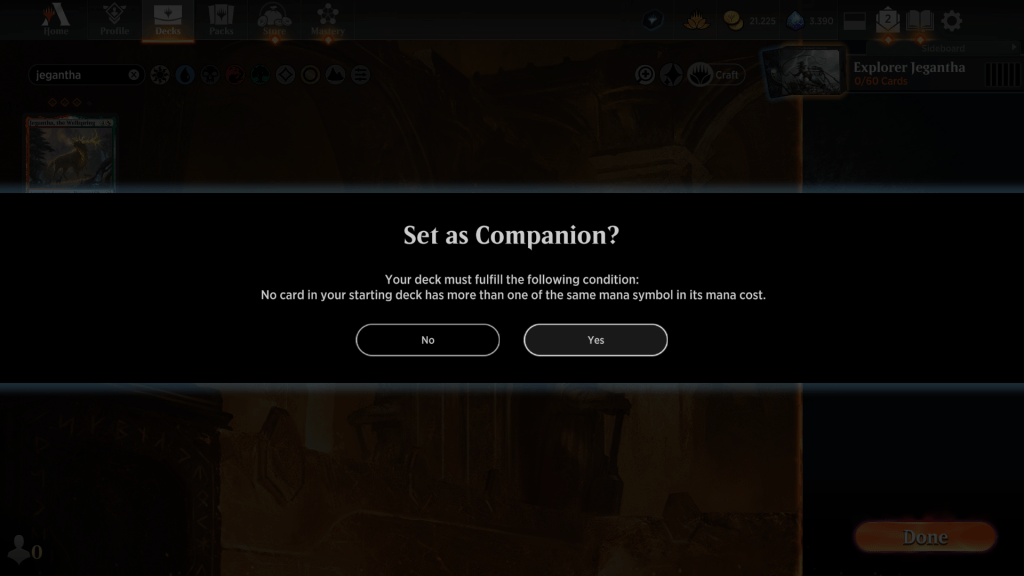
After that, it’s time to build your deck. This is an Explorer Rakdos sacrifice deck. No card has more than one of the same mana symbol, as you can see. Note that the sideboard has exactly one card because Jegantha isn’t in the main deck.
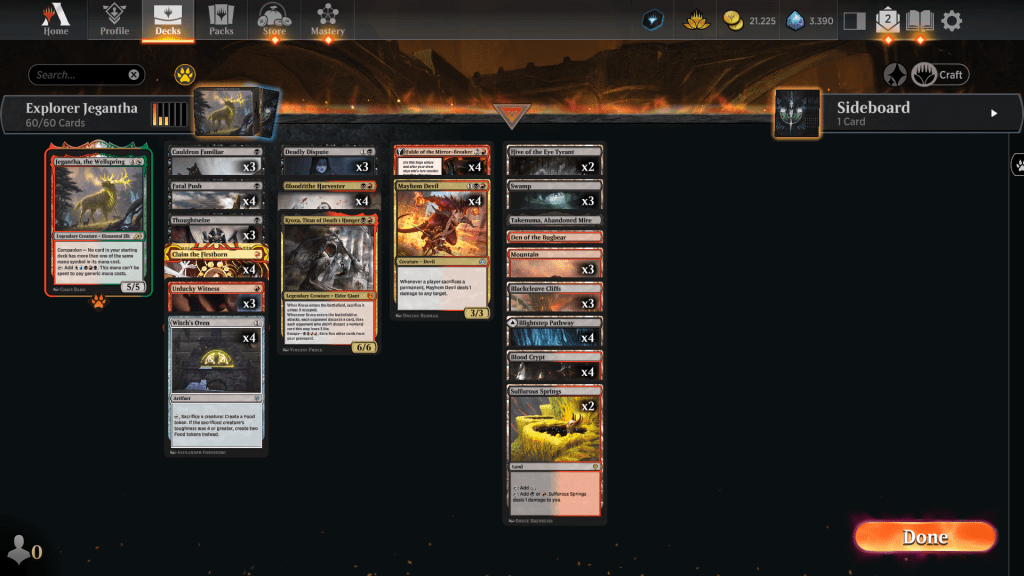
Now I’m playing an Explorer match with the deck. Note that at the start of the game, my companion is located on the bottom right, and it costs to put in my hand. Once I do that, I can cast it for as usual.

Here’s what happens when you try to build a Jegantha deck with a card like Elspeth Resplendent that costs . Arena lets you build the deck, but the companion mechanic doesn’t work.

Wrap Up
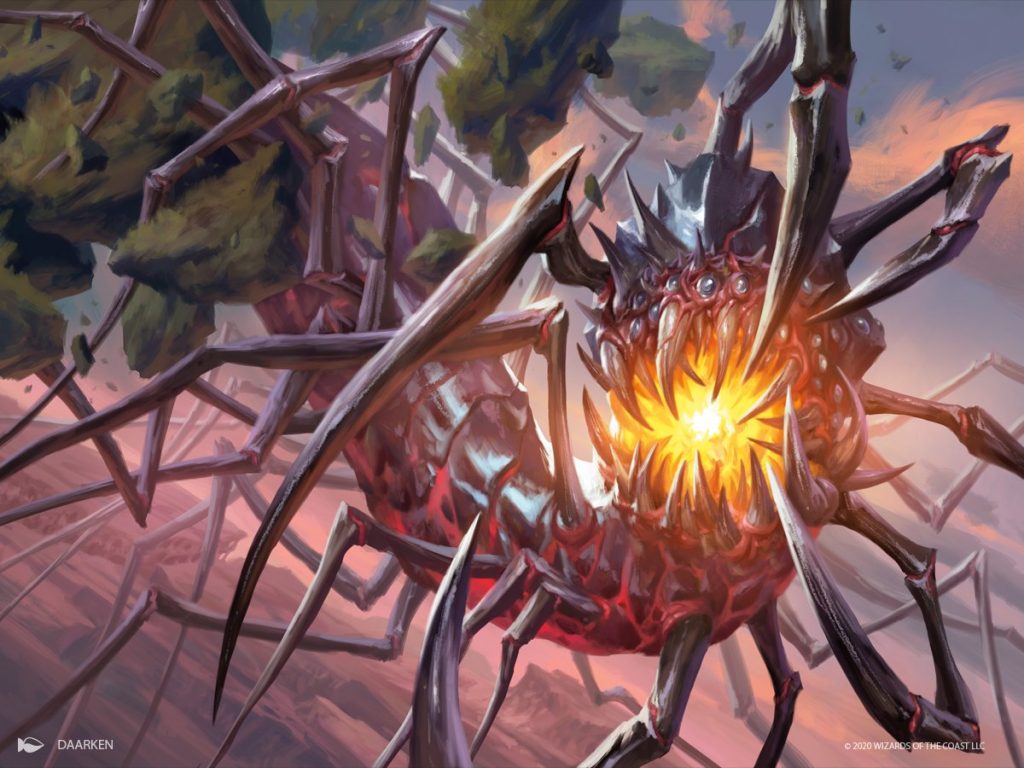
Obosh, the Preypiercer | Illustration by Daarken
Well, that’s all from me on companions. Playing Limited with companions is very interesting since a single card can alter your pick order. While they were in Standard, it was possible to see weird decks with companions succeeding. It would be interesting to have weaker companions in the future or in supplemental sets.
I don’t think WotC will mess with that design aspect soon because there’s a huge risk of making something inherently broken, or worse, uninteresting. It’s a shame that a whole mechanic had to be nerfed just to stay in the game, and we almost had a banned mechanic. And that’s something that happened only with playing for ante.
What do you think of Companions? Love them or hate them? Let me know in the comments below, or leave us a tweet on Draftsim's Twitter.
Stay safe guys, and in the meantime, I’m going to play some Explorer matches with my 80-card Yorion deck while I still can.
Follow Draftsim for awesome articles and set updates: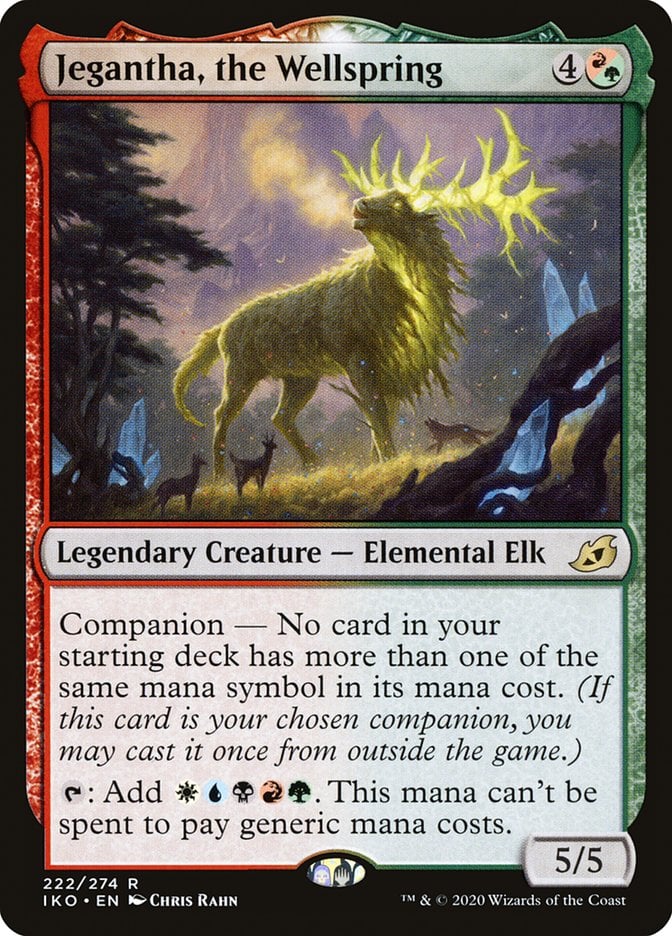

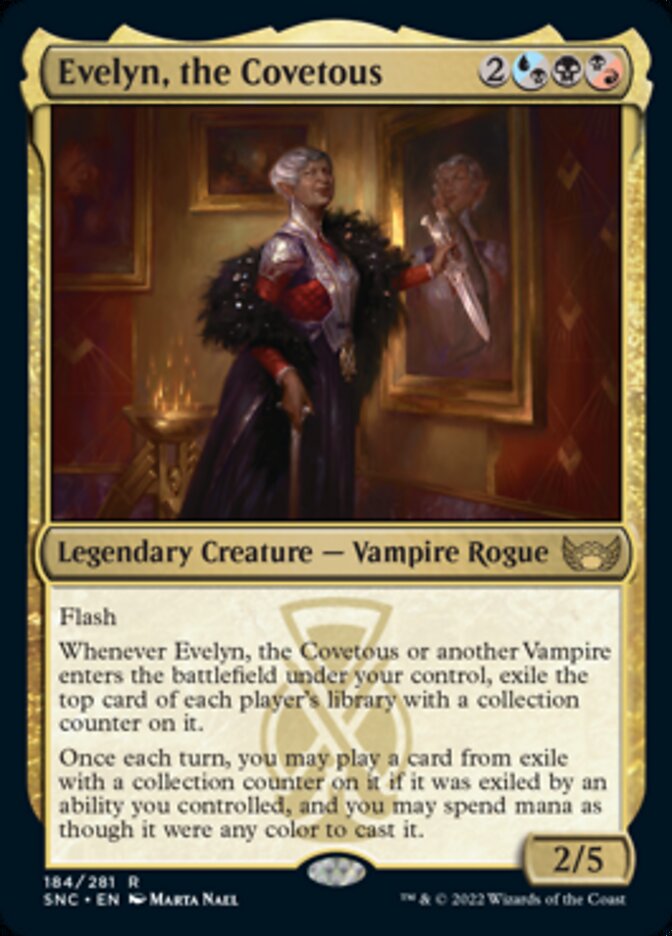
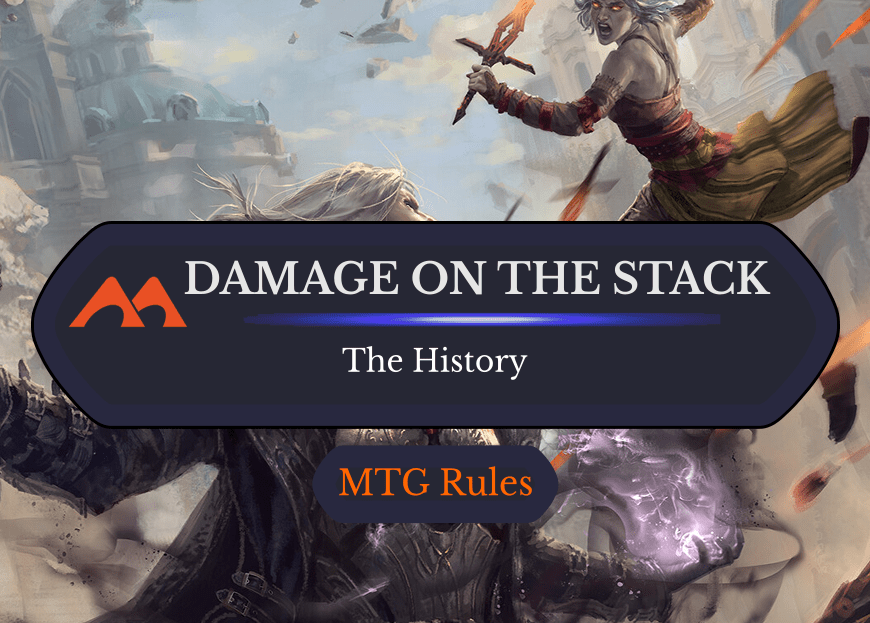

Add Comment